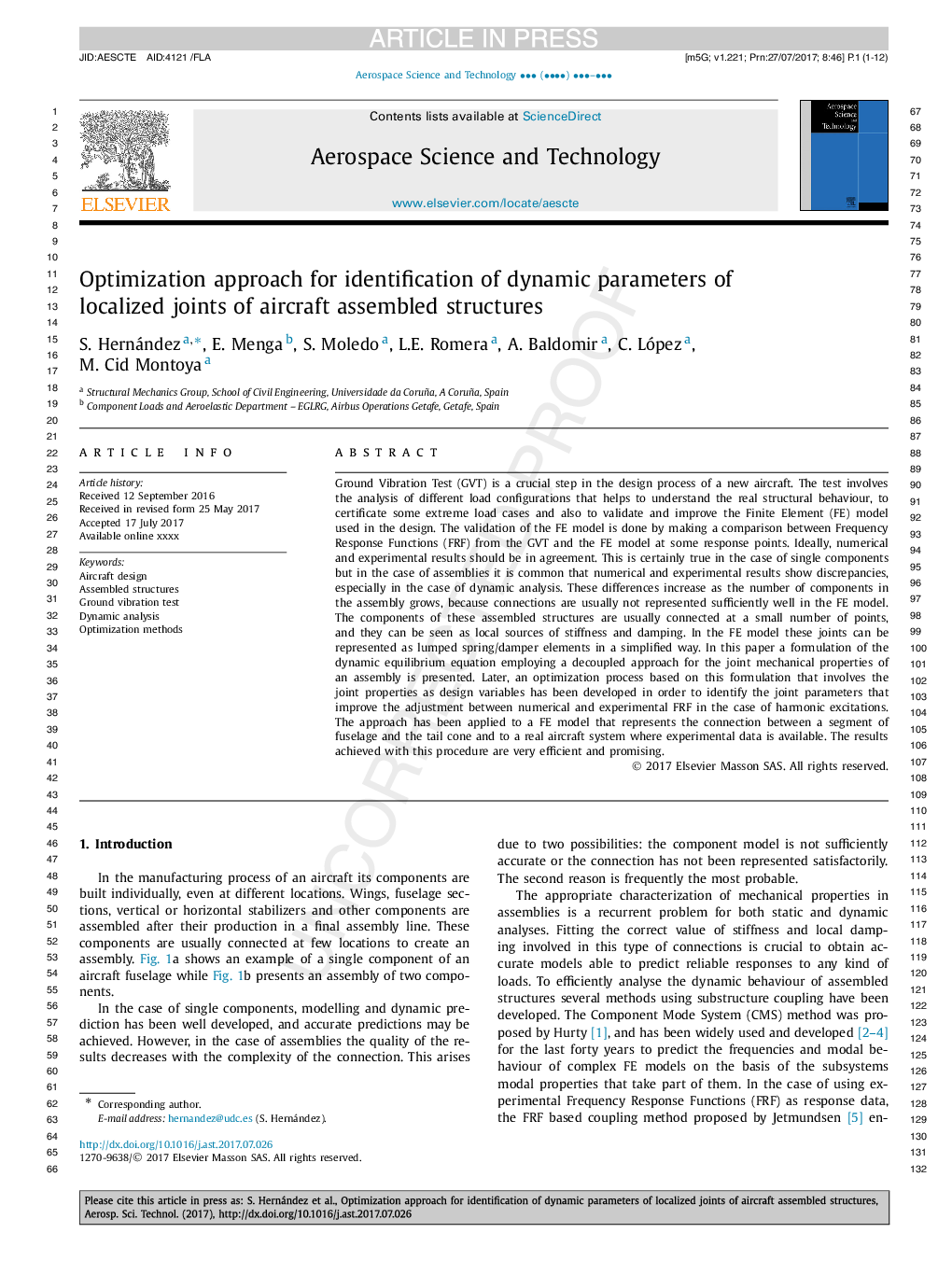| Article ID | Journal | Published Year | Pages | File Type |
|---|---|---|---|---|
| 5472763 | Aerospace Science and Technology | 2017 | 12 Pages |
Abstract
Ground Vibration Test (GVT) is a crucial step in the design process of a new aircraft. The test involves the analysis of different load configurations that helps to understand the real structural behaviour, to certificate some extreme load cases and also to validate and improve the Finite Element (FE) model used in the design. The validation of the FE model is done by making a comparison between Frequency Response Functions (FRF) from the GVT and the FE model at some response points. Ideally, numerical and experimental results should be in agreement. This is certainly true in the case of single components but in the case of assemblies it is common that numerical and experimental results show discrepancies, especially in the case of dynamic analysis. These differences increase as the number of components in the assembly grows, because connections are usually not represented sufficiently well in the FE model. The components of these assembled structures are usually connected at a small number of points, and they can be seen as local sources of stiffness and damping. In the FE model these joints can be represented as lumped spring/damper elements in a simplified way. In this paper a formulation of the dynamic equilibrium equation employing a decoupled approach for the joint mechanical properties of an assembly is presented. Later, an optimization process based on this formulation that involves the joint properties as design variables has been developed in order to identify the joint parameters that improve the adjustment between numerical and experimental FRF in the case of harmonic excitations. The approach has been applied to a FE model that represents the connection between a segment of fuselage and the tail cone and to a real aircraft system where experimental data is available. The results achieved with this procedure are very efficient and promising.
Related Topics
Physical Sciences and Engineering
Engineering
Aerospace Engineering
Authors
S. Hernández, E. Menga, S. Moledo, L.E. Romera, A. Baldomir, C. López, M. Cid Montoya,
